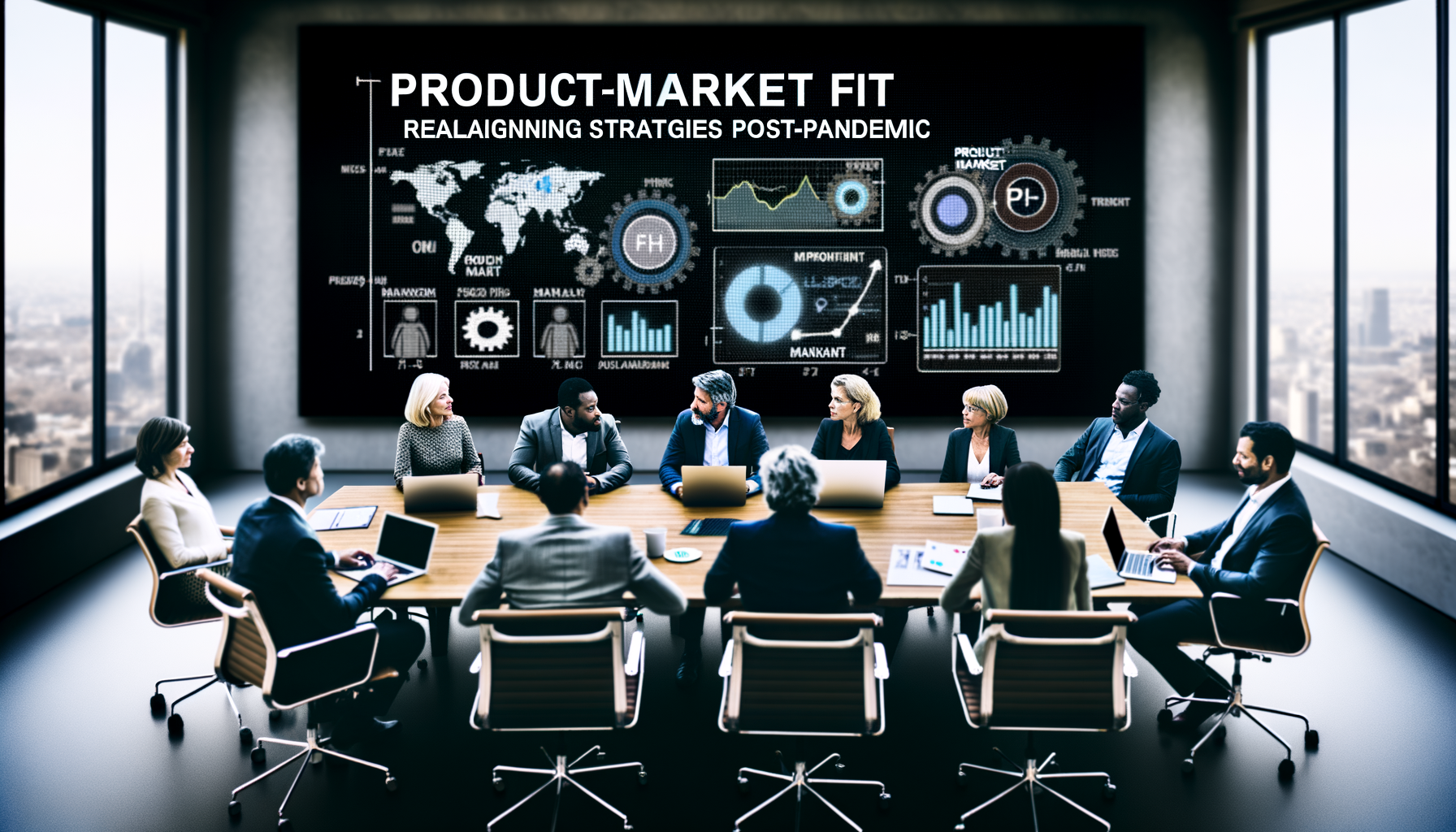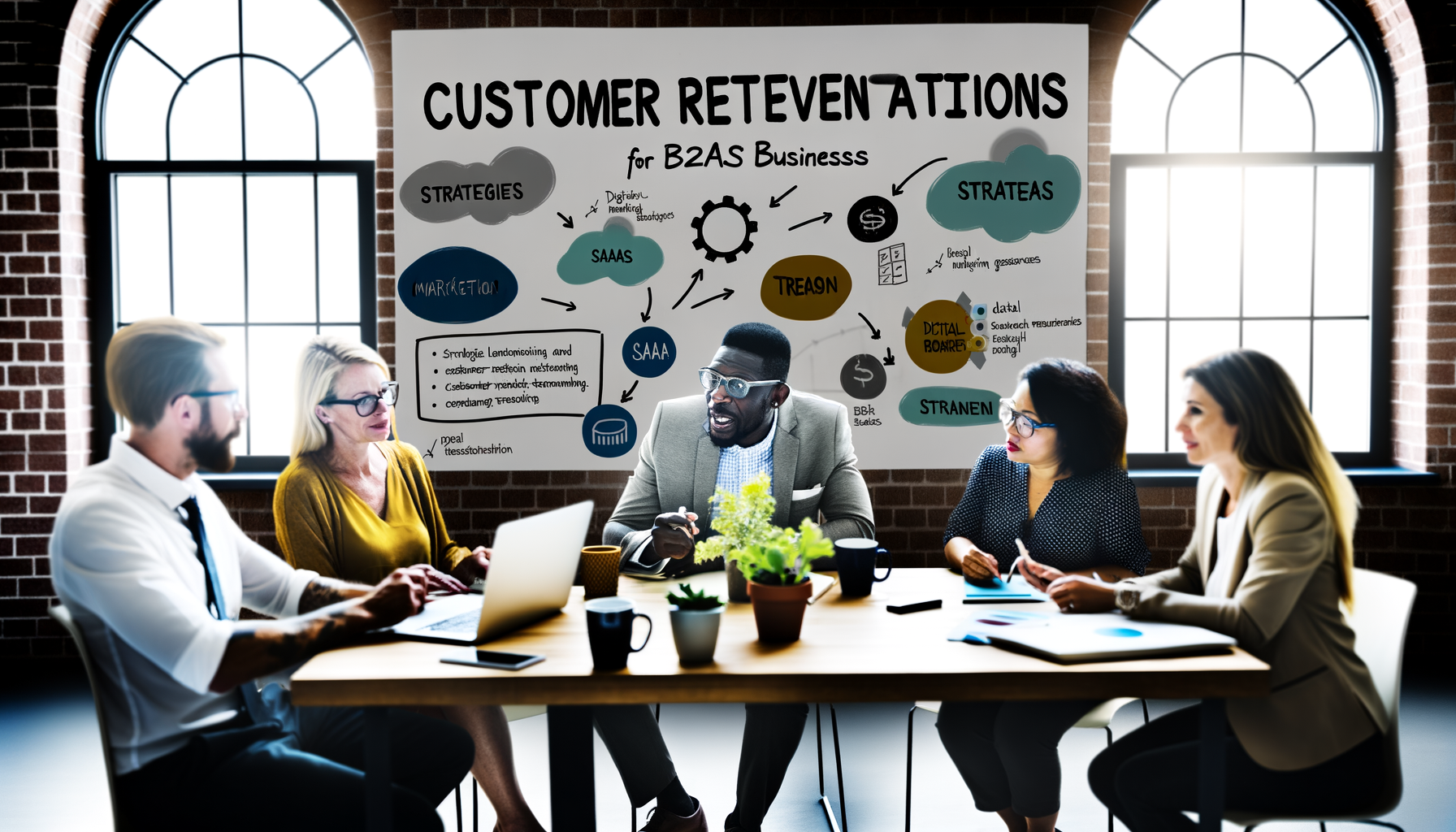
Cybersecurity Threats Facing SaaS Companies in 2024
As digital transformation accelerates, Software as a Service (SaaS) companies are increasingly embracing innovation. However, with rapid technological advancements also come heightened cybersecurity threats. These threats are evolving swiftly, posing significant challenges for SaaS companies striving to protect sensitive customer data and maintain trust. In 2024, understanding these emerging cybersecurity threats will be crucial for staying one step ahead.
The Evolving Landscape of Cybersecurity Threats
In recent years, cybersecurity threats have become more sophisticated, particularly targeting the unique architectures of SaaS platforms. Hackers are leveraging automation and AI to deploy attacks that can infiltrate even the most robust security systems. Understanding this evolving threat landscape allows us to anticipate challenges and devise effective countermeasures.
Phishing Attacks: Old but Gold
Despite the familiarity of phishing attacks, their effectiveness continues to endanger SaaS enterprises. In 2024, expect increasingly targeted phishing campaigns utilizing AI-driven personalisation to dupe employees into divulging sensitive information. These attacks can lead to unauthorized access, data breaches, and significant financial losses.
Ransomware: A Growing Menace
Ransomware incidents have surged, with perpetrators commonly targeting companies with extensive customer data—making SaaS an attractive target. These attacks can paralyze operations and potentially lead to customer data leakage, impacting trust and business continuity.
- Regular backups: Ensure regular data backups to mitigate the impact of potential ransomware attacks.
- Network segmentation: Limit the spread of ransomware by segmenting critical networks.
Supply Chain Attacks: Vulnerabilities Down the Line
Supply chain attacks present a formidable threat, wherein malicious actors exploit vulnerabilities within the service providers or partners in the SaaS ecosystem. As SaaS companies rely on various third-party tools and integrations, securing the entire supply chain becomes imperative to prevent these breaches.
Essential Cybersecurity Strategies for SaaS Companies
Protecting against cybersecurity threats requires a multi-faceted approach. Here are critical strategies to fortify your SaaS business in 2024:
Adopt Zero Trust Architecture
Implementing a Zero Trust framework is essential. By assuming that threats could originate both outside and within the network, SaaS companies can minimize risks. This means verifying every user, device, and application before granting access.
Enhance Employee Cybersecurity Training
Employees are often the first line of defence against cyber threats. Regular training on the latest phishing tactics and security best practices can empower your team to identify and prevent potential threats effectively.
Continuous Monitoring and Incident Response
Setting up continuous monitoring systems enables real-time threat detection and swift responses, vital for minimizing breach impacts. Develop and regularly update incident response plans to ensure prompt and effective handling of security incidents.
The Future of Cybersecurity Threats in SaaS
The cybersecurity landscape is ever-shifting, with threats to SaaS companies intensifying. However, by adopting proactive measures and staying informed, it’s possible to protect your company and customers effectively. Emphasizing robust security protocols, regular audits, and continuous improvement will be crucial in facing 2024’s challenges head-on.
In conclusion, while cybersecurity threats remain a constant concern, we have the power to strengthen SaaS platforms through innovative defensive strategies. I encourage you to explore further resources, connect with industry experts, and stay updated with the latest trends to safeguard your SaaS business.

Product-Market Fit: Realigning Strategies Post-Pandemic
Understanding the nuances of product-market fit is more crucial than ever as businesses navigate this new world. The pandemic has drastically transformed consumer behaviour, tech advancement, and economic conditions, making it essential for startups and businesses to revisit and realign their strategies to maintain relevance and drive success.
Understanding Product-Market Fit
For any startup or existing business, achieving product-market fit means that your product satisfies the demands of your target market. But reaching this sweet spot is just the beginning. It’s an ongoing journey, especially when unexpected disruptions like a global pandemic shift the landscape.
What’s Changed Post-Pandemic?
- The shift to digital: The pandemic accelerated digital transformation, creating opportunities for tech-driven solutions.
- Flexible consumer expectations: Homebound lifestyles led to an increase in demand for convenience and remote solutions.
- Economic pressures: Tightened budgets mean customers are more discerning, seeking maximum value from their purchases.
Given these shifts, businesses must adopt agile approaches to adapt and thrive. This is where revisiting your product-market fit strategy comes into play.
Steps to Realign Product-Market Fit
In adapting to post-pandemic realities, the first step is embracing change. Here’s how I recommend approaching it:
1. Re-evaluate Your Target Market
- Identify new pain points: Customers today face challenges that barely existed pre-pandemic. Conduct surveys or interviews to understand their current needs.
- Segment Changes: Your target demographic may have shifted—consider factors like age, occupation changes, and lifestyle adaptations.
Stay close to your audience through social media interactions or dedicated platforms, which can provide insights into how their preferences have evolved.
2. Assess and Innovate Your Product
- Product iteration: Review your product’s features to see how they align with the current market needs. Innovate based on direct consumer feedback.
- Leverage technology: Embrace tech solutions—like AI or IoT—that can enhance your product’s utility and experience.
Aligning your product not only with immediate consumer needs but also anticipating future trends can offer a competitive edge.
3. Fine-Tune Your Marketing Strategies
- Digital prominence: Marketing is increasingly digital. Utilize SEO, content marketing, social media, and digital advertising strategically.
- Storytelling: Share your brand’s journey, including post-pandemic adaptations, to build trust and relatability.
Customers today seek authenticity; telling your story connects on an emotional level, which can be a differentiator in a crowded market.
Adaptation as a Continuous Journey
One thing that has been highlighted during the pandemic is the need for resilience and adaptability. Product-market fit is an ongoing process, and by staying abreast of market changes, adopting flexible strategies, and listening to consumer feedback, businesses can safeguard themselves against future disruptions.
I’ve always believed that the most sustainable plans are those that evolve. Anticipate changes, stay curious, and foster a culture where learning and adaptation are part of the core strategy. This evolutionary mindset is what will ultimately help you and your business not only survive but thrive in the face of future challenges.
As we continue to maneuver through the post-pandemic landscape, adapting your product-market fit strategies can be the difference between growth and stagnation. I invite you to explore more insights on strategies and innovation at Foundercrate, and join me in this journey of resilience and continuous learning.
Integrating these insights with actionable results might seem overwhelming, but with a focused approach, it is certainly achievable. Stay committed to understanding your market, innovate boldly, and leverage technology as a catalyst for continued growth.

Effective Communication: A Key to Successful Execution
In today’s rapidly evolving business landscape, effective communication stands as the cornerstone of successful execution. Navigating through the stormy seas of strategy implementation requires more than just having a vision; it requires every team member to clearly understand their role and the overall goals of the organization. But what exactly makes communication such a critical component in the equation of business success?
Understanding the Communication-Execution Nexus
When it comes to executing a business strategy, poor communication can be a silent killer. Misunderstood directives, lack of feedback, and insufficient information can derail even the most robust plans. The thread that ties these elements together is effective communication. It serves as the glue that binds strategy to execution, aligning teams, harmonizing actions, and ensuring that everyone is on the same page. Effective communication can transform strategic objectives into shared goals, thereby facilitating smoother execution.
The Role of Transparency and Clarity
Transparency and clarity are the bedrock of effective communication. Clearly articulating goals, expectations, and the details of the plan with all stakeholders can significantly bolster chances of success. According to a study by Harvard Business Review, organizations that adopt transparent communication practices are 60% more likely to succeed in implementing their strategic initiatives.
This involves not just delivering critical information, but also crafting messages in a way that they resonate with the audience. This includes choosing the right words, tone, and channels—whether it’s a team meeting, email, or digital collaboration tools.
Encouraging Two-Way Communication
Effective execution is not just about top-down communication; it requires dynamic, two-way exchanges. When team members feel their voices are heard, it cultivates an environment of trust and empowerment. Encouraging open dialogue allows for the exchange of ideas, feedback, and innovative solutions that could be vital in overcoming challenges faced during execution.
A great way to promote this exchange is by leveraging collaborative platforms such as Slack or project management tools like Asana. These tools facilitate continuous, on-the-go communication, ensuring that nothing falls through the cracks.
The Power of Non-Verbal Communication
While verbal communication often takes the spotlight, non-verbal elements play an equally pivotal role. Non-verbal cues, such as body language, facial expressions, and even silence, can convey as much—or more—than words.
In the context of execution, being mindful of these cues can significantly influence team dynamics and cohesion. A supportive nod or attentive posture can go a long way in encouraging team members to share ideas or voice concerns, thereby fostering an inclusive communication environment.
Leveraging Technology for Better Communication
In an era where remote work is increasingly prevalent, technology has become an enabler of effective communication. Video conferencing applications like Zoom or Microsoft Teams provide platforms for real-time face-to-face interactions, breaking down the barriers of geographical distances.
However, with these advancements, it’s crucial to be aware of potential pitfalls such as information overload and digital fatigue. Striking the right balance involves setting clear norms around digital communication, prioritizing message conciseness, and ensuring regular in-person interactions whenever feasible.
Cultivating a Culture of Continuous Feedback
Constructive feedback is the lifeline of both communication and execution. It allows for course corrections and reinforces a culture of continuous improvement. By making feedback an integral part of organizational communication, businesses can adapt swiftly to changes, ensuring that the execution remains aligned with strategic goals.
Regular team debriefs, performance reviews, and pulse surveys are effective mechanisms for gathering and providing feedback. Cultivating such practices results in a proactive rather than reactive organizational culture.
Conclusion: Actions Speak Louder When Backed by Words
In essence, effective communication is not just an accessory to execution but a driver of success. By fostering an environment where communication is clear, open, and continuous, businesses can ensure that their strategies are executed effectively. Remember, a strategy is only as good as its execution, and execution thrives on the foundation of robust communication. As entrepreneurs and leaders, let us embrace the power of communication to propel our visions into reality. Learn more about how we at Foundercrate innovate communication strategies to drive success—follow me for insights, challenges, and solutions as we navigate the startup ecosystem together.

Harnessing Big Data in SaaS for Competitive Advantage
In the fast-paced world of Software as a Service (SaaS), data is the new currency. As I navigate the dynamic field of entrepreneurship, one theme becomes increasingly clear: the importance of harnessing big data for a competitive advantage. With the continuous surge of information, understanding and leveraging big data is no longer just an optional strategy but a necessity for success.
Understanding the Power of Big Data in SaaS
Big data refers to the colossal volumes of data generated at high velocities from a myriad of sources. In SaaS, this data is expansive, encompassing customer interactions, product performances, transactional data, and market trends, to name a few. For us SaaS entrepreneurs, this data offers an untapped reservoir of insights waiting to be converted into business growth.
When utilized holistically, big data doesn’t just provide a snapshot of the current business environment but offers a predictive analysis that can foresee trends and patterns. This capability equips SaaS companies to make informed decisions, tailor their services, and enhance customer experiences.
Transforming Data into a Competitive Edge
One of the fundamental challenges with big data is transforming it into actionable insights. Here’s how leveraging big data can create a competitive advantage:
- Enhanced Customer Personalization: Data-driven insights allow SaaS companies to customize user experiences on a granular level. By analyzing consumer behavior patterns, preferences, and feedback, it is possible to provide personalized recommendations and features that resonate deeply with users.
- Optimized Business Operations: Big data analytics facilitate the optimization of operational processes. Businesses can identify inefficiencies and streamline operations, boosting productivity and reducing costs by evaluating process data and performance metrics.
- Informed Decision-Making: Analyzing big data yields valuable insights into market trends and customer behaviors, resulting in more informed and strategic decision-making. Investing in the right markets, developing new features, or altering business strategies can all be refined through these insights.
- Predictive Analytics: This is where big data truly shines. By employing advanced data analytics, SaaS companies can predict future outcomes, preparing them to act proactively rather than reactively.
Steps to Implement Big Data Effectively
Leveraging big data effectively requires a strategic approach. Here’s a step-by-step guide for SaaS companies:
Step 1: Define Clear Objectives
To make the most out of big data, start with clear objectives. Consider what specific insights are necessary for achieving strategic business goals, whether it be enhancing customer retention, increasing sales, or improving product effectiveness.
Step 2: Invest in the Right Tools and Talent
A robust set of analytics tools is critical. Invest in technologies like machine learning and artificial intelligence that can process large volumes of data efficiently. Additionally, hiring skilled data analysts who can interpret this data is imperative for deriving valuable insights.
Step 3: Ensure Data Accessibility and Security
Data must be accessible to the teams who need it. Implement data governance frameworks to ensure data remains secure, compliant with regulations, and accessible for analysis by authorized personnel.
Step 4: Encourage a Data-Driven Culture
It’s one thing to have access to data; it’s another to use it effectively. Encourage all departments to prioritise data in their decision-making processes to create a cohesive, data-driven culture.
Overcoming Challenges in Big Data Implementation
Implementing big data solutions comes with its set of challenges, from managing data quality and silos to integrating disparate data systems. However, these can be surmounted through strategic planning and the right partnerships. Collaborating with experienced data specialists can accelerate implementation and foster a better understanding of big data frameworks.
The Future of Big Data in SaaS
The integration of big data in SaaS is set to grow exponentially. As I closely follow industry trends, it’s apparent that those who invest in innovative data solutions now will be ahead of the curve. Technologies like AI and machine learning are revolutionizing how we interpret big data, opening up new vistas for SaaS companies to explore.
Conclusion
In wrapping up, embracing big data is no longer a strategic choice but a strategic imperative. As an entrepreneur committed to seeking out novel solutions, my journey with Foundercrate has taught me the unparalleled benefits that arise from embedding big data into business frameworks. If you’re looking to stay ahead in the competitive SaaS landscape, ceaseless exploration and adoption of big data-driven strategies will be critical. Stay connected with me for more insights and tips on how to harness the power of big data and propel your startup to new heights.

Customer Retention Strategies for B2B SaaS Businesses
In today’s competitive market, focusing solely on acquiring new customers isn’t enough. As a B2B SaaS business, we need to prioritize customer retention to sustain long-term growth and maintain a competitive edge. Retaining customers means creating loyal brand advocates who not only stick around but also spread the word about our services, thereby amplifying our reach.
Understanding the Importance of Customer Retention
Customer retention is crucial in the B2B SaaS arena, as retaining existing clients often costs less than acquiring new ones. By nurturing these relationships, we can unlock consistent revenue streams and enhance our brand reputation. According to a study by Harvard Business Review, increasing customer retention rates by just 5% can boost profits by 25% to 95%. This highlights the importance of having solid retention strategies in place.
Developing a Customer-Centric Approach
One of the foundational strategies to improve customer retention is developing a customer-centric mindset. This involves understanding and meeting customer needs at every touchpoint. Here are some actionable steps:
- Personalise Communication: Personalization can significantly enhance the customer experience. By tailoring our communications based on customer preferences and history, we show that we value them as individuals.
- Implement Feedback Loops: Establish channels for customers to provide feedback and use this data to improve our offerings. Regular surveys, customer interviews, and feedback forms can inform our strategies and demonstrate that we care about their input.
- Offer Exceptional Customer Support: Timely and supportive customer service can turn potentially negative experiences into loyalty-building interactions. Consider investing in a responsive customer support team and user-friendly self-service resources.
Leveraging Technology for Better Retention
In the B2B SaaS industry, technology can be both the product and the enabler of effective customer retention strategies. Here’s how I leverage technology for customer retention:
- Customer Relationship Management (CRM) Systems: A robust CRM can help manage customer relationships by tracking interactions, preferences, and support history, enabling us to personalize our engagement efforts.
- Automation Tools: Automating touchpoints like onboarding emails, satisfaction surveys, and product updates keep customers engaged without overwhelming our team.
- Analytics Platforms: These help track customer usage patterns and predict potential churn, allowing us to proactively address issues and extend targeted retention offers.
Nurturing Long-Term Relationships
Loyalty programs and continued engagement with customers are critical components in the retention toolkit. By providing ongoing value, we ensure customers find continuous benefit from being with us. Here are a few strategies:
- Loyalty Rewards Programs: Offering rewards for continued use or referrals fosters a sense of exclusivity and appreciation, encouraging long-term partnerships.
- Regular Check-Ins: Stay connected with customers through regular business reviews or service assessments. These interactions can uncover new needs or dissatisfaction that can be addressed promptly.
- Educational Resources: Providing guides, webinars, or case studies on maximizing the use of our SaaS products can make customers feel empowered and connected.
The Role of Community Building
Building a community around our product can significantly enhance customer retention. By facilitating a space for users to connect and share best practices, we create a support network that our customers can rely on. Here’s how I initiate community building:
- Online Forums and Groups: Create platforms for customers to ask questions, share successes, and provide advice to peers.
- Host Events: Regular webinars, workshops, or live Q&As foster a sense of belonging and provide opportunities for learning and feedback.
- Highlight Customer Success Stories: Sharing stories of how other businesses benefit from our product can inspire and engage the existing community.
Conclusion: Achieve Growth Through Retention
Focusing on customer retention not only ensures a steady revenue stream but also cultivates a community of loyal ambassadors for our SaaS business. By implementing customer-centric strategies, leveraging technology, fostering long-term relationships, and building a supportive community, we can transform our customer base into a significant asset for sustained growth.
I’m committed to exploring innovative strategies for customer retention and invite you to follow my journey and insights. Together, we can unlock the potential for growth in the B2B SaaS landscape.

Data Privacy Laws Impacting SaaS Companies
Data privacy has become an increasingly critical aspect for SaaS companies navigating the intricate landscape of global regulations. As someone who’s been entrenched in the tech world and startup ecosystem, I understand the myriad challenges SaaS companies face in ensuring compliance with ever-evolving data protection laws. In this article, I’ll delve into some of the key data privacy laws impacting SaaS businesses today, offering insights into maintaining compliance and safeguarding customer trust.
Understanding Data Privacy Laws
Data privacy laws are designed to protect the personal information of individuals, putting certain obligations on companies—especially SaaS providers, who often handle vast amounts of user data. These laws have been quick to adapt to technological advancements, primarily focusing on how data is collected, stored, processed, and shared.
For SaaS companies, staying abreast of these regulations is not merely about avoiding legal consequences; it’s also about building trust and maintaining a reputable brand.
Major Data Privacy Laws to Consider
Several prominent data privacy regulations can significantly impact SaaS businesses:
General Data Protection Regulation (GDPR)
The GDPR, enacted by the European Union, is one of the world’s most stringent data privacy laws. It applies to any company that processes the personal data of EU citizens, regardless of where the company is based. Key elements of GDPR include:
- Consent: Companies must obtain explicit consent from users before collecting personal data.
- Data Subject Rights: Users have the right to access, rectify, or delete their data.
- Data Breach Notifications: Organizations must report any data breaches within 72 hours.
Adapting to GDPR requirements can be complex, but it’s crucial for SaaS companies targeting European markets.
California Consumer Privacy Act (CCPA)
The CCPA, often deemed the American counterpart to the GDPR, imposes stringent data protection obligations on businesses operating in California. Key aspects of the CCPA include:
- Consumer Rights: Users can request information about data collection and usage.
- Opt-Out Option: Users can refuse the sale of their personal data.
- Disclosure Requirements: Companies must disclose financial incentives for data collection.
With its broad applicability, CCPA is another vital law for SaaS companies to understand and comply with, especially those with Californian users.
Personal Data Protection Act (PDPA)
Singapore’s PDPA is a comprehensive framework governing the use of personal data. It strikes a balance between protecting consumer interests and enabling business innovation. Key aspects include:
- Consent Obligation: Organizations must inform and obtain consent before collecting personal data.
- Reasonable Purpose: Data must be collected for a reasonable purpose.
- Access and Correction Rights: Users can access and correct their personal data held by companies.
For SaaS providers operating in Asia or targeting Asian markets, PDPA compliance is indispensable.
Ensuring Compliance with Data Privacy Laws
Staying compliant with data privacy laws is a dynamic process that requires ongoing attention and adaptation. Here are steps SaaS companies can take:
Conduct Regular Privacy Audits
Regular assessments of your data handling processes will help identify any compliance gaps. These audits provide an invaluable opportunity to refine your data protection strategies and enhance your security posture.
Implement Robust Data Security Measures
Employ encryption and other security protocols to protect user data throughout its lifecycle. Implementing robust security measures is not only about compliance but also about fostering user confidence.
Stay Informed and Educated
SaaS companies need to keep themselves updated with any changes in data privacy laws. Regular training and workshops for employees can ensure that the entire team is aligned with the company’s data privacy policies.
Develop Clear Privacy Policies
A well-defined privacy policy communicates to users how their data is being used. Transparent communication builds trust and aligns user expectations with company practices.
Conclusion
Navigating the world of data privacy laws is complex but essential for SaaS companies aiming to expand globally and maintain trust with their users. By understanding key regulations like GDPR, CCPA, and PDPA, and implementing ongoing compliance strategies, SaaS businesses can thrive in this challenging legal environment.
I welcome you to explore further insights and strategies for navigating this ever-changing field on Foundercrate. Together, let’s foster a culture of data protection that aligns with legal requirements and enhances user trust.

Mental Health Resources for Entrepreneurs and Executives
In today’s fast-paced world, the mental health of entrepreneurs and executives often takes a backseat to professional objectives. The pressure of decision-making, coupled with the expectation of constant innovation and growth, can lead to elevated stress levels. What many don’t realize is that neglecting mental health can be detrimental to both personal well-being and business success.
Understanding the Unique Challenges Faced by Entrepreneurs and Executives
Entrepreneurs and executives encounter a distinct set of challenges. The very nature of entrepreneurship demands resilience, adaptability, and perseverance. Handling financial risks, navigating the dynamic market, and leading a team could sometimes feel overwhelming. There’s also the burden of isolation; where can you turn to discuss your deepest worries and fears without feeling judged or jeopardizing your leadership position?
Stress and Its Impact
Stress is an inevitable part of entrepreneurship and executive roles. However, chronic stress can hinder creativity, decision-making, and relationships both at work and home. It’s important to recognize the signs early on – such as irritability, fatigue, or inattentiveness – as these can drastically impact both your mindset and productivity. Understanding and acknowledging mental health struggles is the first step toward seeking solutions.
Effective Mental Health Resources
Fortunately, there are numerous mental health resources available, specifically tailored for individuals in leadership roles:
- Therapy and Counseling: Engaging with mental health professionals can provide entrepreneurs and executives the support needed to navigate their journey. Therapists can offer strategies for managing stress and coping mechanisms tailored to specific demands of the roles.
- Peer Support Groups: Participating in groups with fellow leaders can be incredibly reassuring. Sharing experiences with like-minded people can offer new perspectives and solutions to shared challenges.
- Meditation and Mindfulness Programs: Incorporating mindfulness practices into daily routines helps in grounding and reducing stress. Various apps provide guided sessions that cater specifically to busy lifestyles, fitting seamlessly into tight schedules.
- Workshops and Retreats: These opportunities offer a balance of professional development and personal introspection. They can be an excellent way to step back, reflect, and rejuvenate.
Leveraging Digital Platforms for Mental Health Support
In this digital age, a multitude of online platforms are available offering mental health resources:
- Virtual Therapy and Counseling Services: Platforms like Talkspace and BetterHelp allow for mental health consultations from the comfort of your home or office, making it convenient to integrate into a busy schedule.
- Online Courses and Webinars: Websites dedicated to mental well-being often provide courses on stress management, emotional intelligence, and work-life balance specifically for entrepreneurs and executives.
- Podcasts and Virtual Communities: Digital platforms host numerous podcasts where leaders share their stories, struggles, and strategies for maintaining mental health in demanding environments.
The Ripple Effect of Prioritizing Mental Health
Prioritizing mental health transcends beyond personal benefits. A mentally healthy leader is more productive, innovative, and generally has a positive influence on the work environment. When leaders model the importance of mental well-being, it sets a precedent that influences organizational culture, supporting not just the leaders but the entire team.
Actionable Steps for Entrepreneurs and Executives
An entrepreneurial or executive journey is not meant to be traveled alone. Here are some actionable steps to incorporate mental health resources effectively:
- Schedule regular mental health check-ins: Whether it’s therapy, meditation, or simply time to unwind, prioritize these sessions as non-negotiable segments in your calendar.
- Build a reliable support network: Engage in community groups or professional networks that encourage mental health discussions.
- Educate and encourage your team: Initiate conversations and workshops around mental health in your business environment, promoting transparency and support.
The road to entrepreneurship and leadership is one of the most rewarding but also one laden with challenges. By mindfully embracing resources designed to maintain mental health, you can ensure a balanced and fulfilling journey. For more insights and support tools, I encourage you to follow my journey at Foundercrate and join the conversation on maintaining mental well-being while achieving your professional goals.

The Importance of Agile Execution in Today’s Market
In the rapidly evolving world of business, where change seems to be the only constant, the ability to adapt quickly is key to success. You might find yourself overwhelmed by the sheer pace at which market demands shift, competition intensifies, and technology advances. This is where embracing agile execution becomes not just beneficial but crucial to survival and growth in today’s market.
Understanding Agile Execution
Agile execution is more than just a buzzword; it’s a strategic approach emphasizing flexibility, responsiveness, and customer-focused innovation. This methodology, which originated in the software development sphere, has stretched beyond coding to become a guiding principle for businesses across sectors.
At its core, agile execution involves working within small, cross-functional teams that can swiftly pivot based on immediate feedback and changing priorities. Why is this important, you ask? Because it aligns perfectly with the current market demands that are constantly in flux, requiring nimbleness in operational strategy.
The Benefits of Agile Execution
The advantages of adopting an agile mindset in your business strategy can be transformative:
- Enhanced Flexibility: Agile execution allows businesses to respond swiftly to customer feedback, evolving market trends, and new opportunities.
- Boosted Collaboration: Cross-functional teams foster a collaborative environment where knowledge and skills are shared, leading to more innovative solutions.
- Improved Customer Satisfaction: By incorporating customer feedback into each iteration, your product or service is finely tuned to meet the consumer’s needs.
- Increased Efficiency: Agile execution eliminates the necessity for exhaustive and often outdated documentation, allowing team members to focus directly on output that drives results.
The Impact of Market Demands
Market demands today are more volatile than ever. Consumer expectations are growing, and the need for speed in delivery is paramount. In such a setting, traditional business models, which often require extended periods for decision-making and product development, become obsolete fast.
By leveraging agile execution, you position your business to not only survive but to thrive amidst these challenges. This model promotes a continuous discovery process, enabling you to adapt to market demands almost in real time. So, how can you implement this approach effectively?
Implementing Agile Execution
Shifting to agile execution requires a shift in mindset and committing to a cultural change within your organization. Here’s a roadmap to help you get started:
- Create Cross-Functional Teams: Assemble teams from different disciplines. This diversity breeds innovative thinking and solutions.
- Embrace a Culture of Feedback: Foster an environment where team members feel safe to provide candid feedback and where that input actively influences decisions.
- Incorporate Iterative Processes: Break down projects into smaller, more manageable iterations. This ensures that you’re continually evaluating and improving your product.
- Focus on Delivering Value: Always keep in mind the end goal of delivering value to your customers with each release.
Agile Execution in Action
Consider tech giants like Google or retail powerhouses like Amazon. Their ability to rapidly respond to user feedback and shifts in market dynamics exemplifies the power of agile execution. Their success is not just in innovation but in continually realigning their business with current market demands.
Personally, leading Foundercrate, I’ve realized that adopting agile principles has allowed us to respond more dynamically to the challenges of helping startups secure funding in a competitive landscape. We consistently incorporate investor feedback and changing startup needs to offer a platform that truly resonates and adds value.
Conclusion: Embrace, Adapt, Achieve
In conclusion, the ability to execute agile principles is no longer a luxury for organizations but a necessity. In a world where market demands are incessantly evolving, agile execution provides the flexibility that businesses need to keep pace. As you embark on or continue this agile journey, remember that this is a continuous process of learning and iteration.
Now, more than ever, there is an opportunity to leverage agile execution to address market demands head-on and position your business as a leader in its field. I invite you to take this journey with me and explore the dynamic world of agile responsiveness. For more insights and a deeper dive into the agile world, feel free to follow my updates and continue learning through our experiences at Foundercrate.

Financial Planning for Startups: Avoiding Common Pitfalls
Starting a new venture is a thrilling journey filled with multiple challenges, among which financial planning often looms as one of the most daunting. Many founders, including myself, have faced the precarious balancing act of managing funds, all while trying to scale and sustain a startup. It’s crucial to master financial planning early on to sidestep the common pitfalls that can swiftly erode your financial health and destabilize your business. Here’s a guide on how to navigate these challenges effectively.
The Importance of Financial Planning for Startups
Good financial planning is the backbone of a successful startup. It provides a roadmap to manage resources, supports strategic decision-making, and helps prevent the financial missteps that could jeopardize a fledgling business. The lack of a solid financial plan can lead startups to burn through cash reserves quickly, miss growth opportunities, or incur debts they can’t repay.
Key Components of Successful Financial Planning
1. Budgeting Wisely
Budgeting is not just about listing out expenses; it’s about understanding your revenue streams and forecasting potential income. It’s crucial to:
- Define clear financial goals.
- Track all sources of income and expenditure rigorously.
- Regularly review and adjust your budget as necessary.
By maintaining a disciplined approach, you can avoid over-expenditure and ensure that funds are allocated to the most crucial aspects of your business.
2. Cash Flow Management
Cash flow is the lifeblood of any business. Positive cash flow ensures that your business can meet its obligations, invest in growth, and withstand unforeseen challenges. To manage cash flow effectively, consider:
- Creating a cash flow forecast that projects income and expenses.
- Monitoring accounts receivable and pursuing prompt payments.
- Building a cash reserve for emergencies.
These strategies help maintain liquidity and financial stability.
3. Understanding and Reducing Risks
Startups face numerous financial risks, including market volatility, client dependency, and operational disruptions. It’s essential to:
- Identify potential financial risks early on.
- Use data-driven analysis to make informed decisions.
- Invest in insurance or diversification strategies to mitigate risks.
Being proactive in risk management can protect your startup from potential financial setbacks.
Common Financial Pitfalls to Avoid
1. Overestimating Revenue Projections
One of the most frequent missteps for startup founders is being overly optimistic about revenue projections. Ground your forecasts in reality, using historical data and market research for accuracy. This prevents cash crunches and aligns your financial plan with achievable milestones.
2. Neglecting Cost Control
It’s all too easy to slip into a pattern of unchecked spending, especially when initial funding gives a false sense of security. Regularly scrutinize expenses, negotiate better terms with vendors, and adopt cost-effective measures wherever possible.
3. Ignoring Financial Metrics
Financial metrics such as gross profit margin, operating margin, and return on investment (ROI) are critical to understanding your business’s health. Ignoring these metrics can lead to blind spots in your financial plan, preventing you from making informed strategic decisions.
Leveraging Financial Tools and Expertise
No founder needs to navigate the complexities of financial planning alone. Leveraging financial management tools and consulting with financial experts can be incredibly beneficial. These resources can provide advanced analytical capabilities, offering insights that might not be visible at first glance.
Tools such as:
- Accounting Software: Automate your bookkeeping and provide accurate data for analysis.
- Budgeting Tools: Help manage finances and forecast future needs with precision.
- Financial Advisors: Offer expert advice tailored to your startup’s unique financial challenges.
Conclusion
Mastering financial planning is a cornerstone for the success and sustainability of any startup. By focusing on vital elements like budgeting, cash flow management, and risk assessment, I’ve been able to drive growth while avoiding costly pitfalls. I encourage other startup founders to embrace financial planning as an ongoing practice, using the right tools and expertise to stay agile and informed. Subscribe to my blog to discover more insights into entrepreneurship and the art of growing a successful business.

AI Ethics in SaaS: Balancing Innovation and Responsibility
The evolution of technology, particularly the integration of artificial intelligence (AI) in Software as a Service (SaaS), is both exciting and challenging. On one hand, AI offers unparalleled innovation for SaaS applications. On the other, it poses substantial ethical considerations that cannot be ignored. Today, we’ll explore these ethical concerns and delve into how we can strike a balance between groundbreaking innovation and ethical responsibility.
Understanding AI Ethics in SaaS
When it comes to leveraging AI in SaaS, ethics isn’t just a buzzword; it’s a necessity. AI has the power to transform how businesses function, offering enhanced efficiency, personalization, and decision-making capabilities. However, the ethical implications—such as bias, privacy concerns, and accountability—demand careful deliberation.
As a founder deeply invested in tech innovation, I often reflect on the question: How do we ensure that AI applications in SaaS do more good than harm? Understanding AI ethics starts with recognizing the challenges, including data privacy, algorithmic bias, and transparency.
Data Privacy
One of the core ethical concerns with AI in SaaS is data privacy. As AI becomes integral in managing consumer data, the need to safeguard this information is imperative. We need to ask, are we deploying AI in a way that respects user confidentiality? Do our systems ensure data is secure and only used for intended purposes?
SaaS businesses must prioritize secure data handling practices, such as encryption and anonymization, while being transparent about data usage policies. Building trust with users starts with open communication and robust security measures.
Algorithmic Bias
Algorithmic bias is another significant issue, potentially leading to unfair outcomes. AI learns from historical data, and without proper oversight, it can reinforce existing biases, making decisions that aren’t just or equitable.
To tackle this, we must audit our algorithms regularly, ensuring they are trained on diverse datasets. It’s important to collaborate with a diverse group of stakeholders to spot and rectify bias early in the development process. This ensures fairness and inclusivity in AI-driven SaaS solutions.
Transparency and Accountability
AI in SaaS also calls for transparency and accountability. Users have the right to know how their data is used and how AI decisions impact them. By being transparent, SaaS providers can build trust and foster stronger relationships with clients.
Accountability is equally important. When mistakes occur, holding responsible parties accountable is crucial for maintaining integrity. Companies should implement clear policies and processes to address such issues swiftly and effectively.
Balancing Innovation with Ethical Responsibility
Navigating the balance between innovation and responsibility in AI-led SaaS applications is no small feat. It requires a conscious and dedicated effort from all involved in the development and deployment processes.
Here are a few strategies I’ve found effective:
- Ethical Frameworks: Establishing ethical guidelines within your company can provide a blueprint for decision-making. These frameworks should be comprehensive, addressing a wide range of scenarios from data handling to bias checks.
- Continuous Monitoring: Implement systems for ongoing monitoring and evaluation of AI systems. This helps in mitigating unforeseen impacts and ensuring the solutions evolve responsibly.
- Stakeholder Engagement: Engage with stakeholders at all levels, including customers, employees, and industry experts. Their insights can be invaluable in identifying ethical considerations you might have overlooked.
- Promote Ethical Culture: Foster an organizational culture that values ethical considerations as highly as technical performance. This culture encourages employees to voice ethical concerns and seek solutions actively.
Conclusion: The Way Forward
The journey of integrating AI ethically in SaaS is ongoing and demands commitment from everyone in the tech ecosystem. By adhering to ethical practices, SaaS companies can harness the transformative power of AI responsibly, ensuring benefits truly outweigh the risks.
As we continue to innovate, let’s remain steadfast in our commitment to responsibility. I invite everyone—developers, founders, and users alike—to engage with these conversations and drive the responsible evolution of AI in SaaS. If you’re interested in learning more or have insights to share, feel free to explore more of my thoughts on this topic at Foundercrate. Let’s work together to navigate these challenges and shape a future where innovation and ethics coexist harmoniously.
